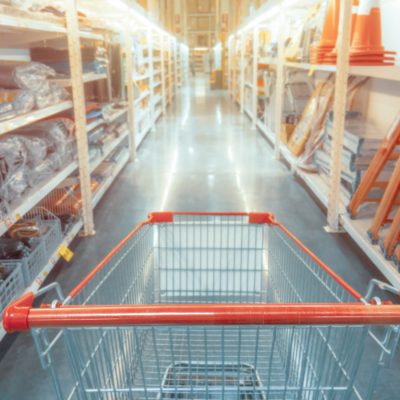Over the last decade, the flooring industry has seen some pretty incredible changes. From the shift in hardwood sourcing away from China to the innovations in vinyl that created a huge demand for LVT, the flooring industry of 2020 looks very different from that of 2010. But the shift isn’t universal. There are a few categories that are clearly leading the industry, and a few that are lagging behind. A recent report by Floor Covering News detailed 2019 industry stats and put those in perspective with past performance to reveal some really profound insights. 1
Let’s focus on the leaders, of which the resilient category of flooring is dominating industry growth. Resilient flooring is a broad category that describes those products made with elastic materials, which means anything that’s not soft (ie: carpet) or hard (ie: stone, laminate and hardwood). The most common types of resilient flooring these days are luxury vinyl planks (LVP) and tiles (LVT), made of plastic composites featuring wood (WPC) and stone (SPC).
Resilient flooring has seen a meteoric rise in market share, up 200% in the last five years alone. In 2019, resilient flooring represented 23.6% of flooring sales compared to 12.2% in 2014. What’s especially interesting about this is the fact that volume, the square footage of flooring sold, has only increased from 15% to 23.9% in the same time period. Why the difference? According to Floor Covering News, it’s all about average sales price (ASP) and its increase. In other words, products are getting better and more expensive, and consumers are responding favorably. In 2006, the average price for resilient flooring was $0.64, and today’s price is double that at about $1.19. The value equation has been flipped thanks to a few product innovations.
Within the resilient category, rigid core products are the popular favorite, particularly in residential applications. Rigid core products are waterproof and durable, both of which are in demand among homeowners. Dive a little deeper, and we see that WPC rigid core products are leading over SPC. While both feature a waterproof core, WPC is less dense and more comfortable. WPC and rigid core account for two-thirds of all residential LVT sales and 56.2% of all residential resilient sales.
Amidst the rise of resilient flooring, hardwood and laminate has taken a bit of a hit. First, there were declines in resources from China. This was followed by the steady competition from rigid alternatives. As hardwood and laminate sourcing has continued to lag, it’s created further openings for rigid products to fill the gap. Laminate sales have dropped consistently since 2016.
You don’t have to be a flooring insider to see the impact of these trends. There are valuable insights here for designers, installers and homeowners. First of all, get ready to see more rigid core products on the market. Manufacturers like Shaw and Mohawk are investing heavily in the production and development of products like LVT and LVP. Second, expect more features and luxury items to infiltrate the selection. Waterproof resilient flooring has been a revelation, but it’s just the beginning. Expect to see more innovations like scratch and dent protection, more finishes and better warranties. If you’re planning or consulting on a flooring project, you’ll want to make sure you’re familiar with the latest products. And, of course, better products deserve better underlayment. If you’re working with rigid core, vinyl, laminate or hardwoods, make sure you start with ECF Underlayment.
About Us
ECF is manufactured in North Carolina by Palziv, North America. Palziv brings together world-class science and engineering to deliver innovative products, materials and services for the construction, building, automotive, recreational, medical and packaging industries. Every day, we strive to grow our community, working with others to seek sustainable, innovative, market-driven solutions that promote better, safer, and healthier lifestyles and protect the environment for generations to come.
1 https://www.fcnews.net/2020/06/scoring-flooring-industry-stats-for-2019/

